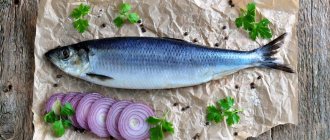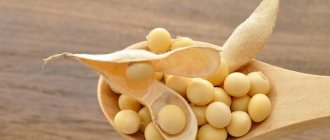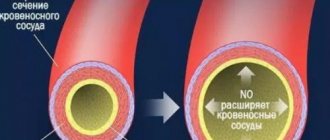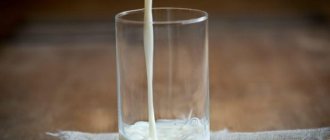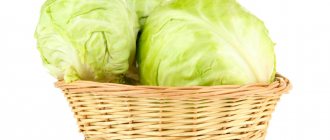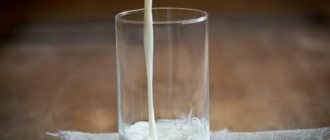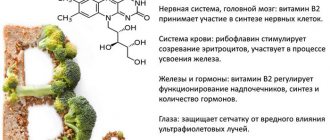Description and benefits of omega-3
Omega-3 polyunsaturated fatty acids
- organic compounds, in the structure of which, in addition to single (in other words, “saturated”) bonds, there are also double bonds between carbon atoms. The most famous representatives of this class - eicosapentaenoic acid (EPA) and docosahexaenoic acid (DHA) - can be formed during the transformation of essential alpha-linolenic acid - due to the body’s inability to synthesize it, it must be supplied with food or in the form of dietary supplements.
- Omega-3 and the nervous system
Remarkable and very important from the point of view of growth and normal development is the fact that DHA predominates in the gray matter of the brain. Despite the fact that this acid is also contained in breast milk, the baby’s needs for it (especially in the first months of life) are very high.
Considering that during the last trimester, the formation of omega-3 reserves is very active - these polyunsaturated acids, penetrating the placental barrier, regulating and selectively (as when issuing a visa) passing certain molecules through the blood from the mother to the child and vice versa, have a powerful stimulating effect. influence on the formation of the Central nervous system. That is why for prematurely born children it is recommended to consider additional intake of essential omega-3 PUFAs.
In addition, after birth, these compounds continue to exhibit multiple effects across a very broad spectrum. So, for example, in the course of a study, British scientists discovered the positive effect of omega-3 in the treatment of ADHD (attention deficit hyperactivity disorder) - at least 40% of children had a higher concentration and concentration, and young schoolchildren significantly improved their abilities to reading and writing.
- Omega-3 and vision
Docosahexaenoic acid occupies a leading position among phospholipids in the cell membranes of retinal photoreceptors. In addition, DHA is also involved in the process of regeneration of visual pigment (that is, its restoration).
In addition, polyunsaturated fatty acids in the retina have a protective effect, protecting its delicate structure from reactive oxygen species, inflammatory mediators and various signaling molecules involved in inflammatory processes.
Study
: Long-chain polyunsaturated fatty acids of the omega-3 family in the prevention of diseases in adults and children: the view of a clinical pharmacologist
- Omega-3 and the cardiovascular system
Numerous studies by scientists show that taking omega-3 PUFAs is associated with a reduced risk of heart pathologies. In particular, this is achieved by reducing the level of triglycerides (due to increased oxidation of fatty acids included in their composition in the liver, as well as inhibition of lipogenesis in general) and increasing the concentration of high-density lipoproteins (HDL - anti-atherogenic), as well as by inhibiting aggregation platelets (that is, their connection with each other and the subsequent formation of a “plug” at the site of damage).
The American Heart Association emphasizes that taking 4 grams per day of prescription medications containing omega-3 PUFAs reduces high triglyceride levels. However, doctors emphasize: first of all, it is necessary to exclude other causes of their increase: such as hypothyroidism and/or type 2 diabetes.
Study
: Prescription omega-3 fatty acid medications effectively lower high triglycerides
In addition, taking DHA (4 g/day) was accompanied by a decrease in blood pressure - thus, scientists came to the conclusion that omega-3 fatty acids can also affect the endothelium (inner lining) of blood vessels.
In addition, omega-3 fatty acids, when included in the phospholipid layer of cell membranes, are able to change their fluidity, as well as control the transmission of signals through them.
These organic compounds, by regulating the function of membrane channels (sodium and calcium), prevent the development of lethal arrhythmias.
Omega-3 PUFAs can, instead of arachidonic acid (omega-6 PUFAs), act as a substrate (raw material) for the action of an enzyme such as cyclooxygenase. As a result, much weaker reaction products are formed instead of pro-inflammatory molecules.
Study
: Cardioprotective mechanism of omega-3 polyunsaturated fatty acids
- Omega-3 and skeletal muscle
Studies note that consuming omega-3 PUFAs prevents the breakdown of muscle proteins, a function associated specifically with the action of EPA.
Thus, supplementing the diet of 45 exercise volunteers with 2 grams of omega-3 for 90 days was associated with significant improvements in muscle fiber strength and neuromuscular transmission. It is believed that these results are achieved by increasing the sensitivity of muscle tissue to a neurotransmitter such as acetylcholine, which takes part in the synapse and thereby stimulates muscle contraction.
In addition, some data indicate the ability of omega-3 to activate the formation of new mitochondria due to increased expression of certain mitochondrial factors and proteins.
Considering that skeletal muscles are insulin-dependent tissues (that is, through the action of this hormone, glucose from the blood enters their cells), any dysfunction in the implementation and regulation of this process leads to insulin resistance - a key stage in the path of type 2 diabetes. With the development of this pathology, there is a decrease in the absorption of glucose by muscles, a decrease in the synthesis of glycogen (acting as a reserve reserve of carbohydrates), a violation of the oxidation of fatty acids and, accordingly, an increase in their pool.
Rodents fed a high-fat diet but supplemented with fish oil had less impaired glucose tolerance than those fed a high-fat diet. In addition, they, although to a lesser extent than the control group of rodents on a normal, balanced diet, showed a decrease in intracellular lipids and some types of ceramides (markers of lipid-induced insulin resistance).
Study
: Omega-3 Fatty Acids and Skeletal Muscle Health
What makes Omega-3 foods better than the rest?
The human body has the ability to convert ALA to some extent into beneficial DHA and EPA, but it is not as efficient if the body were to obtain these Omega-3s directly from foods that contain them. This is just one reason why nutritionists recommend eating wild fish several times a week, since many types of seafood have high levels of DHA and EPA.
While EPA and DHA are the preferred omega-3 sources, all other sources are healthy and encouraged, so add nuts and seeds to your breakfast, or cook fish for lunch. Even after extensive research, it is not entirely clear how well ALA is converted into EPA or DHA or whether it provides benefits on its own, but health authorities such as Harvard Medical School still consider all omega-3 resources to be essential in the diet.
Historically, people who eat the most foods rich in Omega-3s (such as people from Okinawa or Japan) have lived longer and are healthier than people whose diets are low in Omega-3s. The typical Okinawan diet - which consists of plenty of fish, sea vegetables and other fresh produce - contains 8 times more Omega-3 than our diet. This is the reason why the Okinawan population is considered the healthiest in human history.
Signs of Omega-3 PUFA Deficiency
- Low weight in a newborn baby
— this statement was based on a study of 12 thousand Danish children.
- Premature birth
- were associated with a decrease in the concentration of docosahexaenoic acid in the child’s blood.
- Decreased visual acuity
— in addition to the previously mentioned mechanisms of action of omega-3 fatty acids, their inhibitory effect on apoptosis (self-programmed death) of retinal epithelial cells is also noted.
- Cognitive impairment
— in particular, are accompanied by a decrease in the concentration of tissue hormones such as neuroprotectin D, in the synthesis of which DHA is involved. This biologically active compound inhibits the apoptosis of nerve cells by activating a complex cascade of signaling processes and thereby suppresses the development of inflammation.
In addition, docosahexaenoic acid itself directly inhibits the formation of pro-inflammatory molecules - in particular, in the hippocampus - one of the most important structures of the brain involved in the mechanisms of transition of short-term memory to long-term memory, as well as in the formation of emotions.
- ADHD
- attention deficit hyperactivity disorder, accompanied by impaired ability to concentrate, impulsive behavior, lack of self-control and self-control.
- Mental and behavioral disorders
- are associated with accelerated atrophy (under conditions of omega-3 PUFA deficiency) of the gray matter of the brain (in particular, in the area of the following structures: the hippocampus, amygdala, cingulate gyrus, prefrontal and temporal cortex), as well as with a violation of the integrity of the white matter.
Thus, in rodents unable to accumulate DHA, behavioral abnormalities, the development of a depression-like state, and an increase in heart rate were observed.
- Dyslipidemia
(increased levels of cholesterol and/or triglycerides in the blood, decreased HDL) and increased risk of atherosclerosis and cardiovascular diseases.
A 30-year study of several thousand American scientists showed that eating fish (at least 2 times a week) significantly reduced the likelihood of myocardial infarction.
- Skin diseases
. Omega-3 PUFAs are used not only in aesthetic medicine as a prevention and treatment of skin aging (due to their activation of the formation of the main protein of connective tissue - collagen), but are also actively used in dermatology in the treatment of acne, atopic dermatitis and even psoriasis.
Interestingly, in an autoimmune disease like psoriasis, which causes red patches, omega-3 metabolites are also found in these plaques - these are thought to be converted into much weaker inflammatory molecules than, say, omega-6.
We recommend
“Psychology of stress: types, stages, ways of dealing with it” Read more
How do different types of Omega-3 fish oil compare?
Because there is controversy over water contamination with toxins and contaminants like mercury, many people find it difficult to get enough omega-3s from eating fish alone. This is one reason why some people prefer fish oil supplements to complement Omega-3 products.
The difference between "fish oil" and "cod liver oil" can be confusing. Fish oil and cod liver oil are actually two different oils, although they are similar on a molecular level and both are extracted in the same way. The reason they are different lies in their sources: fish oil is extracted from tuna, herring, cod or other deep sea fish. Cod liver oil is extracted only from the liver of this fish.
How do they compare nutritionally? Fish oil is a huge source of Omega-3 fatty acids EPA and DHA, but it does not have enough vitamin A or D. Cod liver oil, on the other hand, has much lower levels of Omega-3, but very high levels of vitamins A and D.
According to some sources, cod liver oil contains about 8% EPA and 10% DHA, much less than fish oil, which has about 18% EPA and 12% DHA.
Because of its concentration of vitamins, cod liver oil has traditionally been given to young children since the 1960s because it helps the brain function and develop properly. Since many people today suffer from vitamin D deficiency, cod liver oil has come back into fashion. Many people who take cod liver oil rely on it during the winter, when they spend less time outdoors, to keep their vitamin D levels high.
What is the best type of fish oil if you want to supplement your diet? I believe the best form of Omega-3 in fish oil contains astaxanthin (a powerful antioxidant that also helps stabilize fish oil), so I would choose wild Pacific salmon fish oil, which has high levels of DHA/EPA and astaxanthin.
Absorption of omega-3 PUFAs
As previously mentioned, both eicosapentaenoic and docosahexaenoic acids can be formed in the body from their common precursor - the essential alpha-linolenic acid, excellent sources of which are:
- Linseed oil.
- Walnuts.
- Hemp oil.
- Mustard oil.
- Milk thistle oil.
The conversion of alpha-linolenic acid to EPA and DHA occurs through complex biochemical reactions, including the elongation of the carbon chain and the addition of a double bond. Two important genes are actively involved in these processes: FADS1 and FADS2. In the presence of their polymorphism, accelerated, more efficient transformation can be observed.
The influence of sex hormones on the processes of transformation of alpha-linolenic acid is also interesting - for example, estrogens increase its conversion.
Omega-3, like all fatty acids, is included in the processes of breakdown and absorption in the small intestine. So, first, under the action of specific pancreatic enzymes, they are released from food components. In addition, the condition for the occurrence of this process will be the normal outflow of bile - a secretion formed by liver cells and acting not only as an emulsifier, but also activating all pancreatic enzymes.
So before adding omega-3 PUFA supplements to your diet, make sure your digestive system is healthy. If necessary, you may consider taking herbal enzymes or their animal counterparts, as well as bile flow stimulants. It is also important to diagnose the gallbladder for the presence of stones in its body or in the liver/bile ducts.
Omega-3 absorption occurs on the villi of intestinal epithelial cells - here they are delivered through special transport machines - micelles, into which they are included with the help of bile acids.
Omega-3 and Omega-6 content in fats and oils
| Fats and oils, 100 g | Omega-6, g | Omega-3, g | Omega-3 : Omega-6 |
| Coconut oil | 1,800 | 0 | no Omega-3 |
| Macadamia oil | 2,400 | 0 | no Omega-3 |
| Cocoa butter | 2,800 | 0,100 | 1 : 28 |
| Kuban sunflower oil (oleic acid content 70% and above) | 3,606 | 0,192 | 1 : 19 |
| Palm oil | 9,100 | 0,200 | 1 : 46 |
| Olive oil | 9,763 | 0,761 | 1 : 13 |
| Hazelnut oil | 10,101 | 0 | no Omega-3 |
| Avocado oil | 12,531 | 0,957 | 1 : 13 |
| Flaxseed oil | 12,701 | 53,300 | 1 : 0,2 |
| Rapeseed oil | 14,503 | 9,137 | 1 : 1,8 |
| Saffron oil (high oleic acid) | 14,350 | 0 | no Omega-3 |
| Mustard oil | 15,332 | 5,900 | 1 : 2,6 |
| Almond oil | 17,401 | 0 | no Omega-3 |
| Peanut butter | 31,711 | 0 | no Omega-3 |
| Rice bran oil | 33,402 | 1,600 | 1 : 21 |
| Sesame oil | 41,304 | 0,300 | 1 : 137 |
| Soybean oil | 50,293 | 7,033 | 1 : 7 |
| Cottonseed oil | 51,503 | 0,200 | 1 : 257 |
| Walnut oil | 52,894 | 10,401 | 1 : 5 |
| Corn oil | 53,510 | 1,161 | 1 : 46 |
| Wheat germ oil | 54,797 | 6,901 | 1 : 8 |
| Sunflower oil (regular) | 65,702 | 0 | no Omega-3 |
| Grape seed oil | 69,591 | 0,100 | 1 : 696 |
| Saffron oil (regular) | 74,615 | 0 | no Omega-3 |
Table 3
Causes of omega-3 PUFA deficiency
- Insufficient consumption of oily fish
- perhaps one of the most common causes of omega-3 fatty acid deficiency. So, say, in the USA, according to statistics, the average person eats less than 13 grams of fish per day - for comparison: the recommended minimum is 40 grams.
In addition, the modern Western diet is rich in their antagonists - omega-6 with pronounced pro-inflammatory properties.
Add salmon, salmon, herring, trout and tuna to your diet - they are richest in these fatty acids.
- Impaired flow of bile (cholestasis)
- another common problem leading to a lack of fat-soluble compounds (vitamins and acids). Bile is an emulsifier of fats. In addition, it is she who activates pancreatic enzymes.
The following medications are recommended:
- Plant enzymes or enzymes of animal origin - when exocrine pancreatic insufficiency is detected.
- Phosphatidylcholine is a phospholipid that can be taken on an ongoing basis. Part of the components of bile and cell membranes.
- If methylation is impaired (necessary, in the context of these pathologies, for the formation of phospholipids), use supplements containing methyl group donors (S-adenosylmethionine, trimethylglycine, methylcobalamin).
- If the outflow of bile is impaired, a doctor may consider using animal bile (only if there is no damage to the mucous membrane of the gastrointestinal tract).
- Ursodeoxycholic acid is a non-toxic bile acid with anti-inflammatory, litholytic effects. Used in the treatment of cholestasis and cholelithiasis.
- Malabsorption
- this is a question about the intestines and the integrity of its epithelial cover. A decrease in the number of villi, on which the process of splitting and then absorption also occurs, leads to indigestibility of nutrients.
- Genetics
— in particular, polymorphisms in genes involved in the conversion of alpha-linolenic acid to EPA and DHA.
- Mitochondrial dysfunction.
Mitochondria are the furnaces where fatty acid oxidation occurs. There are many reasons for their damage. One of the most common, perhaps, is taking antibiotics - and this is not surprising: after all, our little power plants were once bacteria that successfully formed partnerships with other cells.
In addition, say, proton pump blockers (“Omez”), used to reduce the production of hydrochloric acid in the treatment of gastritis and gastric and duodenal ulcers, will also affect mitochondria outside the digestive tract.
As a rule, disturbances in the functioning of mitochondria will occur in the presence of metabolic syndrome - its diagnosis takes into account body mass index, waist size, as well as the following indicators:
- Insulin.
- Glucose.
- Triglycerides.
- HDL (high density lipoprotein).
- LDL (low density lipoprotein).
- Cholesterol.
Note
: dosage - 10-15 mg/kg body weight. Take at night.
We recommend
“Physiology of digestion: stages, organs, enzymes” Read more
You can also take a test for organic acids in your urine - in particular, monitor the level of:
- Succinate.
- Aconitata.
- Fumarata.
- Citrate.
- Isocitrate.
- 2-oxoglutarate.
Note
: the Krebs cycle occurs in the mitochondrial matrix - that is why determining the concentration of the acids involved in it will be indicative.
If mitochondrial function is impaired, it is recommended to consider taking the following dietary supplements:
- L-carnitine - transports fatty acids from the cytoplasm into the mitochondrial matrix.
- Magnesium.
- Coenzyme Q10.
- Alpha lipoic acid.
- B vitamins.
- antioxidants that protect lipids from oxidation by free radicals.
What are the best Omega-3 foods?
Below are the top 15 foods that contain the most Omega-3 (percentages based on a daily intake of 4,000 milligrams of Omega-3):
- Mackerel: 6,982 milligrams in 1 cup cooked (174 percent DV)
- Salmon fish oil: 4.767 milligrams in 1 tablespoon (119 percent DV)
- Cod liver oil: 2,664 milligrams in 1 tablespoon (66 percent DV)
- Walnuts: 2,664 milligrams per 1/4 cup (66 percent DV)
- Chia (Spanish sage) seeds: 2,457 milligrams in 1 tablespoon (61 percent DV)
- Herring: 1.885 milligrams in 3 ounces (47 percent DV)
- Salmon (farmed): 1,716 milligrams in 3 ounces (42 percent DV)
- Flaxseed meal: 1,597 milligrams in 1 tablespoon (39 percent DV)
- Tuna: 1,414 milligrams in 3 ounces (35 percent DV)
- White fish: 1,363 milligrams in 3 ounces (34 percent DV)
- Sardines: 1.363 milligrams per can/3.75 ounces (34 percent DV)
- Hemp seeds: 1,000 milligrams in 1 tablespoon (25 percent DV)
- Anchovies: 951 milligrams per 1/2-ounce can (23 percent DV)
- Natto: 428 milligrams per 1/4 cup (10 percent DV)
- Egg yolks: 240 milligrams per 1/2 cup (6 percent DV)
What foods should you avoid even though they are advertised as being high in Omega-3? These include traditional animal meats (that are not grass-fed), farmed fish (salmon is especially common), regular and pasteurized dairy products, and sea krill oil supplements (which are made from krill, deep-sea molluscs, which are usually contaminated).
Remember that farmed fish is inferior to wild caught fish in terms of both pollution levels and nutrient and omega-3 content. Farmed fish typically contains high concentrations of antibiotics, pesticides, and low levels of nutrients such as vitamin D. There is also evidence that farmed fish has more Omega-6 fatty acids and less Omega-3 fatty acids.
Below is a table of what omega-3 contains and in what quantities per 100 grams of product.
Table 1
| Fish (serving 100 g) | Amount of Omega-3 fatty acids (g) | Amount of Omega-6 fatty acids (g) | Omega-3: Omega-6 |
| Caviar black and red | 6,789 | 0,081 | 1 : 0,01 |
| Fresh Atlantic mackerel | 2,670 | 0,219 | 1 : 0, 08 |
| Atlantic sea salmon | 2,586 | 0,172 | 1 : 0,06 |
| Farmed Atlantic salmon | 2,506 | 0,982 | 1 : 0,39 |
| Fresh Pacific herring | 2,418 | 0,192 | 1 : 0,07 |
| Fresh tuna | 0,243 — 1,664 | 0,010 -0,068 | 1 : 0,006 – 1 : 0,40 |
| Pacific mackerel fresh | 1,614 | 0,116 | 1 : 0,07 |
| Atlantic sardines | 1,480 | 0,110 | 1 : 0,07 |
| Canned salmon | 1,323 | 0,152 | 1 : 0,11 |
| Fresh trout | 1,068 | 0,224 | 1 : 0,21 |
| Swordfish | 0,825 | 0,030 | 1 : 0,03 |
| Oysters | 0,740 | 0,032 | 1 : 0,04 |
| Fresh halibut | 0,669 | 0,038 | 1 : 0,05 |
| Fresh conger eel | 0,653 | 0,196 | 1 : 0,30 |
| Shrimps | 0,601 | 0,028 | 1 : 0,05 |
| Flounder | 0,563 | 0,008 | 1 : 0,2 |
| Sea shellfish | 0,396 | 0,032 | 1 : 0,08 |
| Scallop | 0,396 | 0,004 | 1 : 0,01 |
| Pacific cod | 0,221 | 0,008 | 1 : 0,04 |
Omega-3 fatty acid intake standards
ISSFAL (International Society for the study of Fatty Acids and Lipids) recommends that adults take at least 500 mg/day of the EPA+DHA combination.
The Food and Agriculture Organization of the United Nations gives wider ranges of values, in particular dividing the population by age groups:
- 0-6 months: DHA (0.1-0.18% E, where E is energy).
- 6-24 months: DHA (10-12 mg/kg body weight).
- 2-4 years: EPA + DHA (100-150 mg).
- 4-6 years: EPA + DHA (150-200 mg).
- 6-10 years: EPA + DHA (200-250 mg).
- During pregnancy and breastfeeding: 0.3 g/day.
Study
: GOED recommendations for EPA and DHA
Many studies also note that taking omega-3 PUFAs during pregnancy significantly reduces the risk of premature birth - in particular, this was noted when supplementing with them (at a concentration of 2.7 g) from the 20th week. This effect is believed to be associated with their influence on muscle tissue (which includes the middle layer of the uterine cavity - the myometrium) through the regulation of calcium channels.
The American Heart Association advises women with heart disease to eat fatty fish at least twice a week, and to consider taking capsules containing 850-1000 mg EPA + DHA, and for patients with high blood triglyceride levels, 2-4 grams of omega-3 PUFAs per day.
Study
: Cardiovascular Disease Prevention in Women: Comments on the AHA Guideline: Evidence-Based Guidelines
Ideas for cooking with Omega-3 products
Salmon pies recipe
Cooking time: 15 minutes
Servings: 1-2
INGREDIENTS:
- 1 can Alaskan salmon
- 2 eggs
- 1 tablespoon olive oil
- ¼ onion, chopped
- ¼ package Mary's Gone crackers, crumbled
PREPARATION:
Place all ingredients in a bowl and stir. Form the pies. Fry each side for five minutes.
Spicy baked fish recipe
Cooking time: 40 minutes
Number of servings:6
INGREDIENTS:
- 6 white fish fillets, such as mahi-mahi, sea bass, or golden snapper
- sea salt and black pepper to taste
- garlic clove, finely chopped
- 1/2 cup finely chopped onion
- 3 tablespoons coconut oil
- 1 tablespoon onion powder
- 1 tablespoon lemon pepper
- 1/2 teaspoon paprika seasoning
- 1 can (8 ounces) roasted tomatoes, diced
- 4 tablespoons parsley
- 1 tablespoon apple cider vinegar
- 3 tablespoons grated raw cheese
- 3 tablespoons almond flour
PREPARATION:
- Preheat oven to 350 degrees.
- Sauté the onion and garlic in a small skillet in coconut oil over medium-low heat until the onion is translucent and soft.
- Grind the fried tomatoes in a blender.
- Add the garlic/onion mixture to the blender with the tomatoes and other herbs.
- Place the fish in a baking tray coated with coconut oil.
- Generously pour the tomato sauce over the fish.
- In a small bowl, combine flour and cheese.
- Sprinkle the fish with the cheese mixture and bake for about 30 minutes.
Oatmeal with chia seeds
Cooking time: 15-20 minutes
Number of servings:2
INGREDIENTS:
- 2/3 cup oatmeal
- 2 cups coconut milk
- 1/2 teaspoon vanilla extract
- 1/2 cup pumpkin puree
- 1/2 tablespoon chia seeds
- a pinch of salt
- 1/2 teaspoon cinnamon
- 1/4 teaspoon ginger
- 1/8 teaspoon nutmeg
PREPARATION:
- In a small saucepan, bring the oats and coconut milk to a boil.
- Reduce heat to low and add pumpkin puree and chia seeds.
- Cook over low heat for 5-7 minutes.
- Add the remaining spices, stirring regularly.
- Cook over low heat for another 5-7 minutes.
TOP 20 foods high in omega-3
| The product's name | EPA g/kg wet weight | DHA g/kg wet weight |
| 1. Sardine | 6.6 | 19 |
| 2. Herring | 8.5 | 8.3 |
| 3. Salmon | 6.2 | 5.8 |
| 4. Rainbow trout | 0.9 | 3.1 |
| 5. Sockeye Salmon | 0.8 | 1.9 |
| 6. Capelin | 3.6 | 5.7 |
| 7. Eel | 1.6 | 2.2 |
| 8. Horse mackerel | 1.64 | 5.86 |
| 9. Perch | 0.3 | 0.9 |
| 10. Pike perch | 0.2 | 0.8 |
| 11. Tilapia | 0.1 | 0.5 |
| 12. Pollock | 1.0 | 2.4 |
| 13. Cod | 0.6 | 1.5 |
| 14. Hake | 0.9 | 1.5 |
| 15. Flounder | 1.8 | 1.1 |
| 16. Tench | 0.3 | 0.5 |
| 17. Pike | 0.3 | 1 |
| 18. Bream | 0.4 | 0.6 |
| 19. Crucian carp | 0.2 | 0.6 |
| 20. Mullet | 0.46 | 0.08 |
Natural springs
Omega-6 polyunsaturated fats are common natural compounds found in almost all nuts, seeds and vegetable oils.
The main sources of omega-3 are fish (fatty varieties), seafood, and flaxseed oil. Let's look at which foods contain PUFAs. Table No. 1 “Natural sources of essential fatty acids”
| Name of fresh product (unprocessed) | Content of ω-3 in 100 grams of ingredient, grams | Content of ω-6 in 100 grams of ingredient, gram |
| Linseed oil | 40 – 57 | 12 – 17 |
| Camelina oil | 38 – 45 | 17 – 25 |
| Hemp oil | 25 | 55 |
| Cedar oil | 17 | 36 |
| Walnut oil | 10 | 53 |
| Rapeseed oil | 8 – 9 | 14 – 15 |
| Soybean oil | 6 –7 | 45 – 50 |
| Mustard oil | 5,5 | 16 |
| Corn oil | 1,15 | 53 |
| Olive oil | 0,7 | 10 |
| Sesame oil | 0,3 | 40 |
| Sunflower oil | 0,25 | 9 |
| Salmon oil | 38 | 1,55 |
| Cod liver oil | 20 | 0,95 |
| Herring fat | 13,5 | 1,15 |
| Caviar black, red | 7 | 0,08 |
| Mackerel | 1,7 – 3 | 0,2 |
| Herring | 1,7 – 2,5 | 0,13 – 0,19 |
| Salmon | 2 | 0,12 – 0,17 |
| Trout | 0,9 | 0,17 |
| Oysters | 0,9 | 0,04 |
| Pink salmon | 0,7 | 0,09 |
| Mussels | 0,5 | 0,02 |
| Squid | 0,5 | 0,002 |
| Flax-seed | 22,5 | 6 |
| Chia seeds | 17,5 | 5,8 |
| Walnuts | 2,7 | 33,7 |
| Pistachios | 0,2 | 13,5 |
| Sesame | 0,25 | 25 |
| Pumpkin seeds | 0,12 | 20,5 |
| Hazelnut | 0,1 | 7,8 |
| Cashew | 0,065 | 7,8 |
| Sunflower seeds | 0,03 | 24 |
| Almond | 0,004 | 12 |
| Peanut | 0,003 | 16 |
| Mint (dried) | 2,5 | 0,45 |
| Avocado | 0,15 | 0,015 |
| Brussels sprouts | 0,1 | 0,045 |
| Lettuce (leaves) | 0,06 | 0,025 |
| Garlic | 0,02 | 0,25 |
| Turkey fat | 1,5 | 21 |
| Lamb fat | 1,35 | 3,8 |
| Beef fat | 1,05 | 1,5 |
| Duck fat | 1,04 | 13 |
| Chicken fat | 1 | 20 |
| Pork fat | 0,6 | 12 |
| Butter (fat) | 0,3 | 24,3 |
| Mozzarella cheese | 0,37 | 0,4 |
| Chees Feta | 0,3 | 0,3 |
| Chicken egg (raw) | 0,1 | 1,6 |
| Blackberry | 0,095 | 0,18 |
| Whole milk | 0,075 | 0,13 |
To increase the bioavailability of fatty acids, the daily menu is enriched with products containing vitamin E and dihydroquercetin (Q 10).
Excess omega-3 PUFAs
In the realities of the modern world, when omega-6 polyunsaturated fatty acids usually predominate in the diet, and most patients have problems with the outflow of bile, which are accompanied by bending of the gallbladder neck, helminthic infestation or stones, it is quite difficult to achieve an excess of omega-3 .
We recommend
“How to avoid vitamin B12 deficiency and what foods to take for this?” More details
However, like any biologically active compound, omega-3 PUFAs must be taken strictly according to the instructions. Moreover, it must be taken into account that they, although to a much lesser extent, are capable of forming pro-inflammatory molecules (as in the case of the previously described psoriasis).
In addition, their use in individuals with low platelets should be strictly supervised by nutritionists and physicians, as omega-3 PUFAs can further reduce blood clotting.
Omega-3 Foods: The Best vs. the Worst
Pay attention to any large supermarket and you will see that food labels are vying with each other to boast about Omega-3 content now more than ever. While Omega-3s are artificially added to a variety of processed foods—such as peanut butter, baby formula, oatmeal, and protein powder—it's best to get these nutrients from natural seafood, especially commercial seafood.
While natural Omega-3 resources are not always perfect, you can find foods that contain them to some extent through fortification: pasteurized dairy products, fruit juices, eggs (not organic or from cage-free chickens), margarine, soy milk and yogurt, bread, flour, weight loss drinks, baby food (since scientists discovered that Omega-3s help children's brains develop properly).
EPA and DHA resources in fortified foods are typically obtained from microalgae. In their natural form, they add a fishy odor to food, so these processed foods must undergo intensive chemical cleaning to mask their taste and odor. This reduces or alters the fatty acids and antioxidants in foods, making them less healthy than foods that have not been processed.
In addition, Omega-3 is now being added to animal feed to increase its content in dairy, meat and poultry products. As food manufacturers know that consumer awareness of Omega-3 is growing, we will continue to see more and more products fortified with this supplement.
Digestion of fats
When digested, fats are broken down into glycerol and fatty acids, from which fats are then synthesized in the intestines and released into the blood. The fatty acids are then stored in fat cells. Not all fatty acids supplied with food are completely absorbed by the body, as many nutritionists mistakenly believe. They may not be partially or completely absorbed in the small intestine and may be excreted from the body.
The origin and chemical composition of fats also affects their absorption:
1. Saturated fatty acids and trans fats tend to be stored in fat stores rather than immediately burned through energy metabolism. 2. Monounsaturated fatty acids are mainly used directly after absorption. In addition, they help reduce glycemia, which reduces insulin production and thereby limits the formation of fat reserves. 3. Polyunsaturated fatty acids , especially Omega-3, are always consumed immediately after absorption, in particular, due to an increase in food thermogenesis - the body’s energy consumption for digesting food. In addition, they stimulate lipolysis (the breakdown and burning of fat deposits).
Cholesterol
The nutritional and biological value of fats is also related to the content of phospholipids and sterols. The most famous human representative of the group of sterols is cholesterol.
Cholesterol is an important component of cell membranes and cytoplasm; it is involved in the exchange of bile acids and in the synthesis of hormones of the adrenal cortex and gonads. Cholesterol is used for the formation of bile in the body, the synthesis of vitamin D, and also performs a protective function - it is involved in the emergency “repair” of cell membranes.
Despite all these beneficial properties, cholesterol is primarily perceived by many as the cause of cardiovascular disease and the occurrence of “cholesterol plaques.” The thing is that there are two types of cholesterol. To make it easier to understand the issue, study the infographics.
The concentration of cholesterol in the blood can be determined using a blood test. In this case, as a rule, the total cholesterol level, the level of HDL and LDL and the atherogenic coefficient are determined - the proportional ratio of total and “good” cholesterol. Abnormally high levels of both HDL and LDL require attention, monitoring, additional testing and possibly treatment.
| Major factors that can increase total blood cholesterol (LDL cholesterol in particular) include heredity, excessive consumption of foods high in saturated fat, being overweight, lack of physical activity, and high levels of stress. |
Scientists have found that a combination of all or several of these conditions is necessary to increase cholesterol levels.
Polyunsaturated fatty acids (PUFAs)[edit | edit code]
Polyunsaturated fatty acids (PUFAs)
are essential fats that are often included in sports nutrition and nutraceuticals.
The biological and nutritional value of fats lies in the fact that they are a source of essential nutritional factors, which, like amino acids and vitamins, cannot be synthesized in the human body and must be supplied with food. These include: polyunsaturated fatty acids (PUFAs or vitamin F) - linoleic and linolenic, arachidonic, as well as fat-soluble vitamins (, , ,).
Modern classification of PUFAs
includes their division into families
omega-6
and
omega-3
depending on the location of the double bond, counting from the metal end of the molecule. The omega-3 family includes alpha-linolenic, eicosapentaenoic, docosahexaenoic fatty acids, omega-6 - linoleic, gamma-linolenic, arachidonic acids. The biological activity of essential fatty acids is different, the most active is arachidonic acid, its activity is 2-3 times higher than the activity of linoleic and linolenic acids. However, there is little of it in food products, but it can be formed in the body from linoleic acid with the participation of vitamin B6 and tocopherol. Linolenic acid itself is inactive, but it enhances the biological activity of linoleic acid.
The main sources of PUFAs are shown in the table, from which it can be seen that the sources of PUFAs of the omega-6 family are mainly various vegetable oils, while omega-3 PUFAs are found in large quantities in fish, seafood, and egg yolk.
Main sources of essential PUFAs (% total fat)
| Products | omega-6 | omega-3 |
| Linseed oil | 14 | 58 |
| Soybean oil | 50 | 7 |
| Sunflower oil | 65 | 0 |
| Corn oil | 59 | 0 |
| Olive oil | 8 | 0 |
| Mackerel, g/100 g product | 1,0 | 2,6 |
| Tuna, g/100 g of product | 1,0 | 1,5 |
| Egg yolk, g/100 g product | 0,1 | 0,05 |
Once in the body, essential fatty acids are capable of being converted through biochemical reactions into longer-chain and unsaturated derivatives. All PUFAs - derivatives of linoleic acid belong to the ω-6 family, and derivatives of a-linolenic acid - to the ω-3 family. The processes of desaturation and elongation occur with the participation of the corresponding enzymes - desaturases and elongases, common to representatives of various families of FAs, as a result of which they compete for these enzymes, and the ratio of FAs of different families in the diet and body determines the preferential formation of derivatives of one or another family. This circumstance is important because it affects the manifestation of the regulatory function inherent in PUFAs, which is associated with the formation of biologically active substances from fatty acids with 20 carbon atoms (eicosan) - eicosanoids (prostaglandins, prostacyclins, thromboxanes, leukotrienes, etc.).
The ability of ω-3 PUFAs to act as precursors of various classes of physiologically active eicosanoids underlies the use of ω-3 PUFAs in the prevention and complex therapy of a number of diseases in children and adults. The first publications on the association between high consumption of fatty fish rich in ω-3 PUFAs and lower blood triglyceride levels in Greenland Eskimos appeared more than 30 years ago.
PUFAs can have the following effects:
- hypocholesterolemic, including increased levels of high-density lipoproteins (HDL);
- hypotriglyceridemic;
- antiatherogenic;
- hypotensive;
- thrombolytic;
- anti-inflammatory.
In addition, ω-3 PUFAs affect the processes of ischemia-reperfusion, the production of adenosine triphosphate and the functioning of ion channels, i.e. affect all the main pathogenetic links in the development of cardiovascular diseases (CVD).
Due to the fact that ω-3 PUFAs increase the fluidity of cell membranes, thereby increasing tissue sensitivity to insulin, and are a substrate for the production of prostaglandins, which increase the number of insulin receptors, they are used in the prevention and treatment of both type I and type II diabetes. .
At the same time, food should not contain more than 30% of the total calories. It is recommended that less than 8% of calories come from PUFAs, with an ω-6/ω-3 ratio of 5:1–3:1. It must also be remembered that due to the participation of PUFAs in the processes of lipid peroxidation, it is advisable to take them simultaneously with antioxidants (tocopherol, etc.). Considering that food sources of ω-3 PUFAs are quite limited and the ratio of ω-6/ω-3 PUFAs in the modern human diet is far from optimal, biologically active food supplements that enrich the diet with PUFAs have now been developed and are available on the market in large quantities.
Content of polyunsaturated fatty acids in some dietary fats
| Product | PUFA content , g/100 g product |
| Soybean oil | 61,2 |
| Refined corn oil | 57,6 |
| Cottonseed oil | 50,8 |
| Refined sunflower oil | 37,6 |
| Dietary margarine “Health” | 32,8 |
| Cod oil | 27,9 |
| Kuban sunflower oil | 18,3 |
| Creamy margarine | 17,8 |
| Refined olive oil | 12,1 |
| Pork fat | 10,6 |
| Lamb fat | 4,1 |
| Beef fat | 3,2 |
